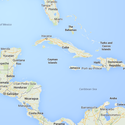-
About
- About Listly
- Community & Support
- Howto
- Chrome Extension
- Bookmarklet
- WordPress Plugin
- Listly Premium
- Privacy
- Terms
- DMCA Copyright
- © 2010-2025 Boomy Labs

 List Builder
List Builder
Listly by List Builder
Top Videos for Cruise Destination Pisco, Peru – Created by BoostVacations.com Staff. Feel Free to add, vote or provide feedback to the list.
Pisco is the most popular climb in the Cordillera Blanca, Peru. Entry port Yungay. Located in the National Park Huascaran. For further information on this tour write us to tebac@hotmail.com
Recorriendo la Plaza de Armas de esta parte del departamento de Ica.
http://www.SouthAmericanPostcard.com/ The amazing Islas Ballestas islands and a seal colony beach, Pisco, Peru.
The Ballestas Islands are a group of small islands near the town of Paracas located within the Paracas District of the Pisco Province in the Ica Region, on the south coast of Peru. Composed largely of rock formations and covering an estimated area of 0.12 km², these islands are an important sanctuary for marine fauna like the guanay guano bird, the blue-footed booby and the tendril.
Climbing of pisco mountains with Alpa-K team. Admire various different points of view on this magnificent mountain. See you www.alpa-k.net or www.alpa-k.org
The Paracas Candelabra, also called the Candelabra of the Andes, is a well-known prehistoric geoglyph found on the northern face of the Paracas Peninsula at Pisco Bay in Peru. Pottery found nearby has been radio carbon dated to 200 BCE, the time of the Paracas culture.
Pisco was one of the most damaged areas of the 2007 Peru earthquake, at least 80% of all Pisco was destroyed, more than 400 people died and more than 1500 were injured. The earthquake had 8.0 magnitude in Richter scale
The Paracas National Reserve is located in Ica, Peru and consists of the Paracas Peninsula, coastal areas and tropical desert extending to the south slightly past Punta Caimán, a total of 335,000 ha (217,594 ha are marine waters and 117,406 are part of the mainland).
The Ballestas Islands are a group of small islands near the town of Paracas located within the Paracas District of the Pisco Province in the Ica Region, on the south coast of Peru. Composed largely of rock formations and covering an estimated area of 0.12 km², these islands are an important sanctuary for marine fauna like the guanay guano bird, the blue-footed booby and the tendril.
